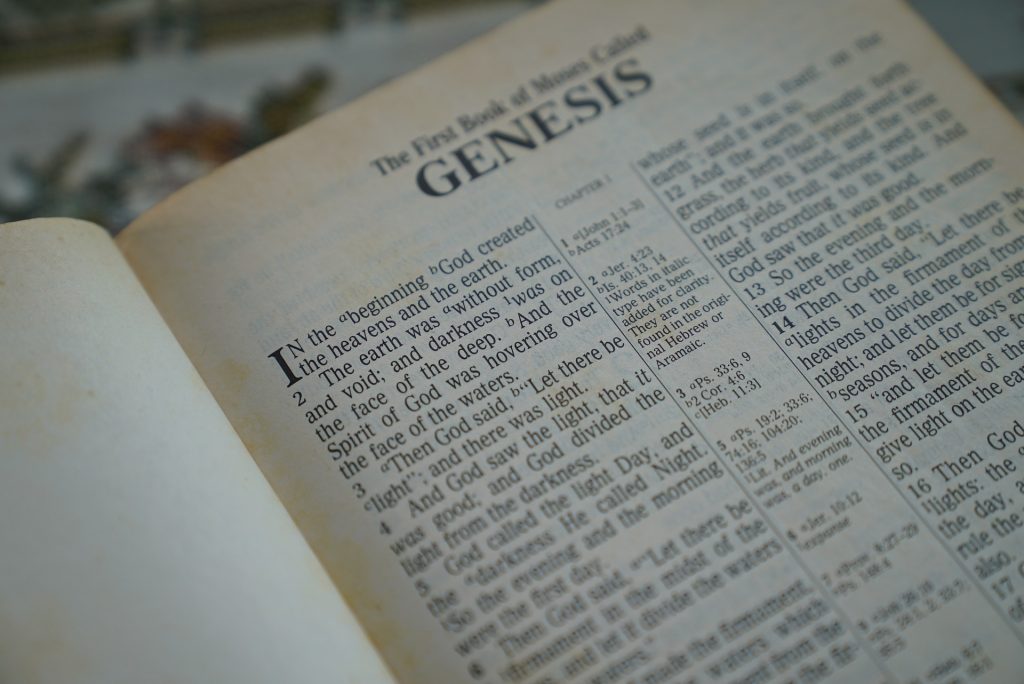Before tackling the big questions of Genesis, it is important to clarify an important issue – ‘How should we read the Bible’s account of creation?’. We need to do this in order to get around what can at times be a barrier to people even beginning to read this first book of the Bible.
Christians are divided on this and emotions often run high when they meet to debate the question. To put it simply there are three broad ways of understanding this writing on the origins of the universe among those who believe it to be true – these and the Literal, the Concordist and the Literary.1
Literal
Over the centuries the church has taken the Genesis account of creation as a literal description of what happened in the formation of the earth and the universe. People who hold to this view read the text as straightforward history with a narrative that provides a chronological depiction of the work of God in creation.
They feel that to see the accounts as other than literal is to cast doubt over the whole Bible as the reliable word of God. Some in this group would argue that Christians who think differently have caved in to pressure from the modern scientific world and compromised their beliefs.
‘Literalists’ challenge modern scientists by questioning their presuppositions. They construct an alternative system called ‘creationism’ that dates the earth as very young, and they include a massive flood in their explanation of why the scientists are wrong about geological phenomena and the age of fossils.2
Sometimes this approach is portrayed as simplistic and lacking sophistication, but it must be acknowledged that this group includes some top scientists and theologians with theories that are complex, carefully researched and thought-out and come from a position of trust in the reliability of the Bible.

Concordist
Those who hold to what has been called ‘concordism’ try to find agreement between science and the Bible, and prefer to view the first chapters of Genesis as a summary of the origins of the world3, rather than a literal description of creation. The concordists would look upon the ‘days’ of Genesis 1 as geological eras, pointing out that the Hebrew word ‘day’ (yom) is not restricted to a 24-hour period. It can in fact refer to a very long period of time. Because ‘concordists’ allow for much more time in the formation of the earth, they find remarkable points of agreement between science and the biblical account. These include for example the movement from inorganic to organic forms; the location of the earliest forms of animal life in the sea; and the appearance of mankind at the end of the process of creation rather than in the middle. In the minds of concordists, all these factors speak of harmony between geology and Genesis.4 For many believers, this understanding helps them to reconcile the scientific evidence for a very old earth, with what they read in their Bibles.
Literary
When it comes to reading the Genesis account of origins, other believers focus on the literary skill of the writer, seeking to discover the meaning of the text by examining the way the story is told. This way of understanding Genesis is the literary approach. It recognises the figurative nature of much of the language. It says that, guided by the Holy Spirit, the writer wants to describe the finished creation and to paint broad brushstrokes of the reality of God’s world and our place in it.
Creativity, skill and the use of many literary devices is abundantly evident, and give the biggest clues about the meaning of the text.
Understanding the purpose of the writing is the key to this way of reading. The nature of the beginning of Genesis is, according to this theory, to address questions of ‘who and why?’ in relation to the beginning of the universe, not ‘what and how?’
Those taking the literary approach believe that the text is neither science, not straightforward history, nor merely poetry, but a mixed style that, while telling of large and critical truths, does not rely on literal language. Creativity, skill and the use of many literary devices is abundantly evident5, and give the biggest clues about the meaning of the text.
Convinced believers in this approach no longer find difficulty in scientific renderings of the age of the earth and living matter. Other ‘problems’ such as the issue in Genesis of the stars, sun and moon being created on the fourth day (remembering that the famous ‘let there be light’ happened on the first day) are no longer sticking points, but illuminating devices that give rich meaning to the text.
Those who focus on the literary nature of the text make the distinction between the story (content, events, characters, plot and setting) and the discourse (the way the story is told). The Bible is both history and literature and there is no doubt that the writers use great skill in presenting the material. This is very much evident in Genesis and the creation accounts in particular.

It is important to understand that each of these approaches seeks to take the Bible very seriously.
Those who hold to these different theories come to their position out of a strong allegiance to the bible as the word of God. They each trust that it is God’s primary means of speaking to us, and that it comes to us without blemish or error. Each of these approaches believers the material in Genesis relays vital truths and a basis from where we can understand out place in the world. They all argue that without such a foundation, we will becomes terribly lost.
So, while Christians have different ways of interpreting the creation accounts of Genesis, they can all agree on the key elements of the book.
This is an edited extract from Hope for a Shattered World published by Christian Education Publications. Used with permission.
Footnotes
- In these distinctions I am following Henri Blocher’s explanation of the terms from In the Beginning – the opening chapters of Genesis, IVP (UK, 1984), p 47.
- Henri Blocher, In the Beginning – the opening chapters of Genesis, IVP (UK, 1984), p 47.
- Blocher, ibid, p 20.
- Blocher, ibid, p 44.
- Bruce Waltke, Genesis Lecture notes, Regent College Vancouver, 2002, p 31.


